Although construction on the 1819 Innovation Hub isn't slated for completion until Fall 2018, its first tenant, the UC Simulation Center, will soon call the building home. Photo/Andrew Higley
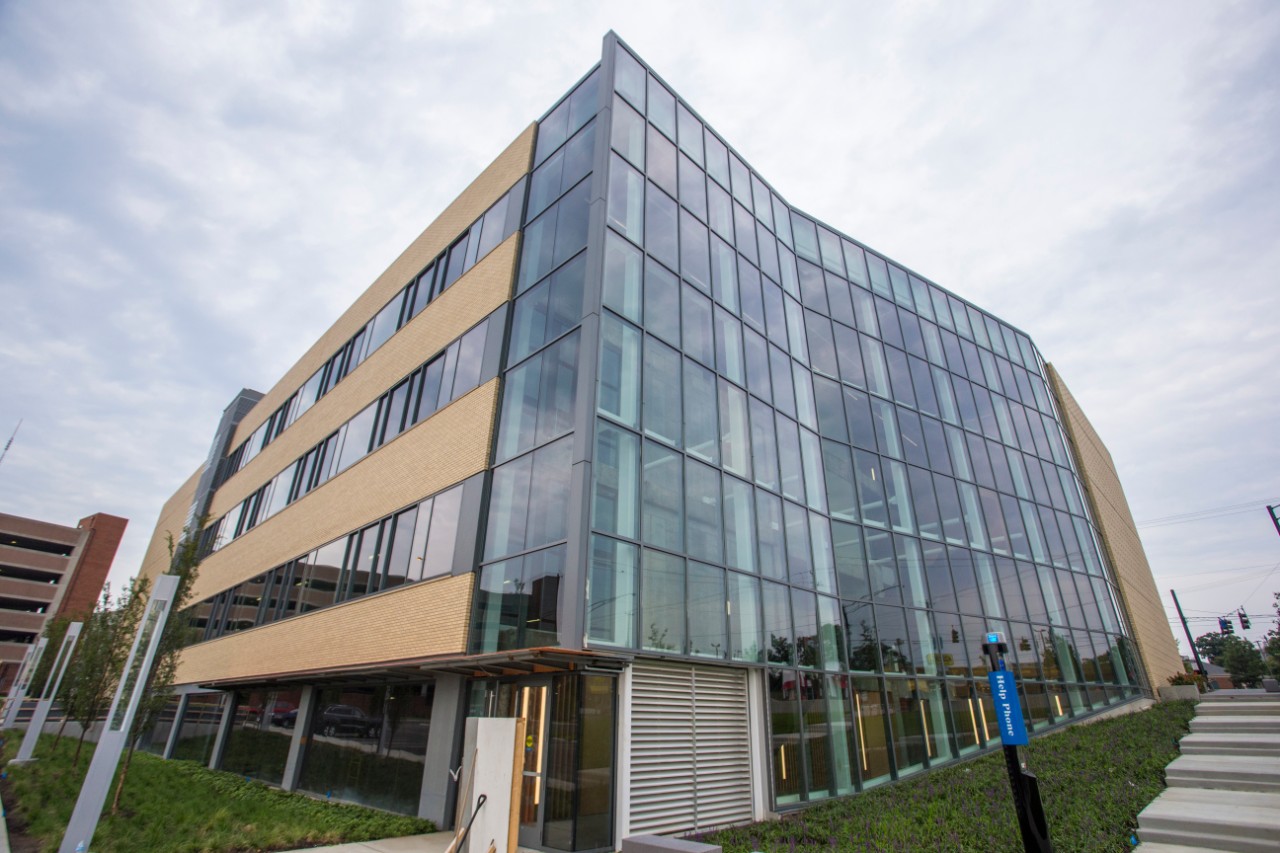
Although construction on the 1819 Innovation Hub isn't slated for completion until Fall 2018, its first tenant, the UC Simulation Center, will soon call the building home. Photo/Andrew Higley
By Matt Koesters
513-556-5279
Photos by Andrew Higley/UC Creative Services
Aug. 10, 2017
The intersection of academia and industry in Cincinnati now has a new address: 2900 Reading Rd. That’s where you’ll find the University of Cincinnati’s new front door to the community — the 1819 Innovation Hub.
Named for the year of UC’s founding, the 1819 Innovation Hub occupies a structure built in 1929 that once housed a Sears, Roebeck & Co. department store and later the home to UC Campus Services. But make no mistake: UC’s $38 million investment in the renovation of the cavernous, 133,000-square-foot building signals that the 1819 Innovation Hub is all about UC’s future.
“We want to create an innovative environment that allows our students to engage with industry, with not-for-profits, with faculty and with other students. Let this be the place where magic occurs,” says David Adams, CEO of the UC Research Institute.

New UC Chief Innovation Officer David Adams also serves as the CEO of the UC Research Institute.
Adams, the former CEO of the University of Louisville’s Institute for Product Realization, recently took their reins of UCRI. He also now serves as UC’s chief innovation officer and reports directly to UC President Neville Pinto. Adams and Pinto are already well aquainted, as Pinto hired Adams during the former’s tenure as UofL interim president.
Adams envisions the 1819 Innovation Hub becoming a creative supercollider, with students, faculty and businesspeople from multiple disciplines working together to develop creative solutions to problems. “The vision is to make this as school-agnostic as possible,” says Adams. “The real power of this is having engineering students colliding with DAAP students, colliding with nursing students, colliding with business school students — how it occurs in the world that they’re going to get involved in — what kind of magic can occur because of the collisions that occur there?”
Adams is no stranger to that kind of magic. His run at UofL’s institute was highlighted by a partnership with GE Appliances, culminating in the latter’s creation of the FirstBuild microfactory and makerspace on UofL’s campus. Adams sees UC’s 1819 Innovation Hub serving as the place where similar collaborations between UC and the Cincinnati business community will be catalyzed.
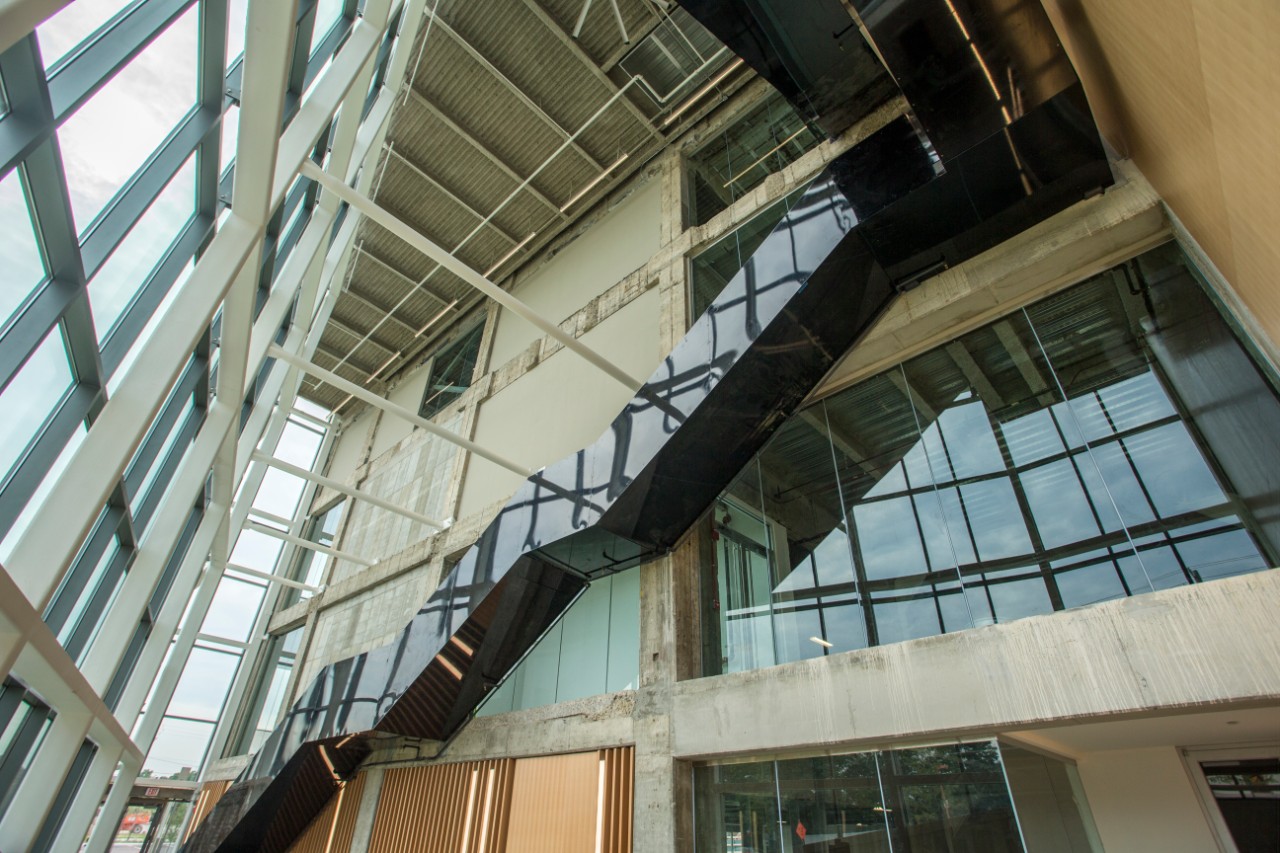
Visitors to the 1819 Innovation Hub will be struck by the openness of the lobby and the large staircase that provides access to each of the building's upper floors.
Decisions are still being made on the final layout of each of the first three floors of the building, but some features have already been determined. The first floor will house a 12,000-square-foot makerspace, where tools for creators of all skill levels — including hand tools, 3-D printers, laser cutters and CNC machines — will be available for use. The second floor’s main features will include several classrooms, conference rooms and a multipurpose space capable of accommodating up to 150 guests, making it the primary gathering area of the building
Although construction isn’t scheduled to be entirely complete until fall of next year, the 1819 Innovation Hub will soon welcome its first tenant, the UC Simulation Center. Formed in partnership with Procter & Gamble, the center capitalizes on the College of Engineering and Applied Science’s computer simulation expertise to provide P&G with cost-effective, high-value virtual modeling capabilities that are applied to the company’s products and manufacturing processes while developing a talent pipeline for future recruitment.
The UC Simulation Center will neighbor UCRI and 1819 building staff on the fourth floor of the Innovation Hub. That UC center leaves behind the Turner Building, as does the Live Well Collaborative, which will set up shop on the Innovation Hub’s third floor.
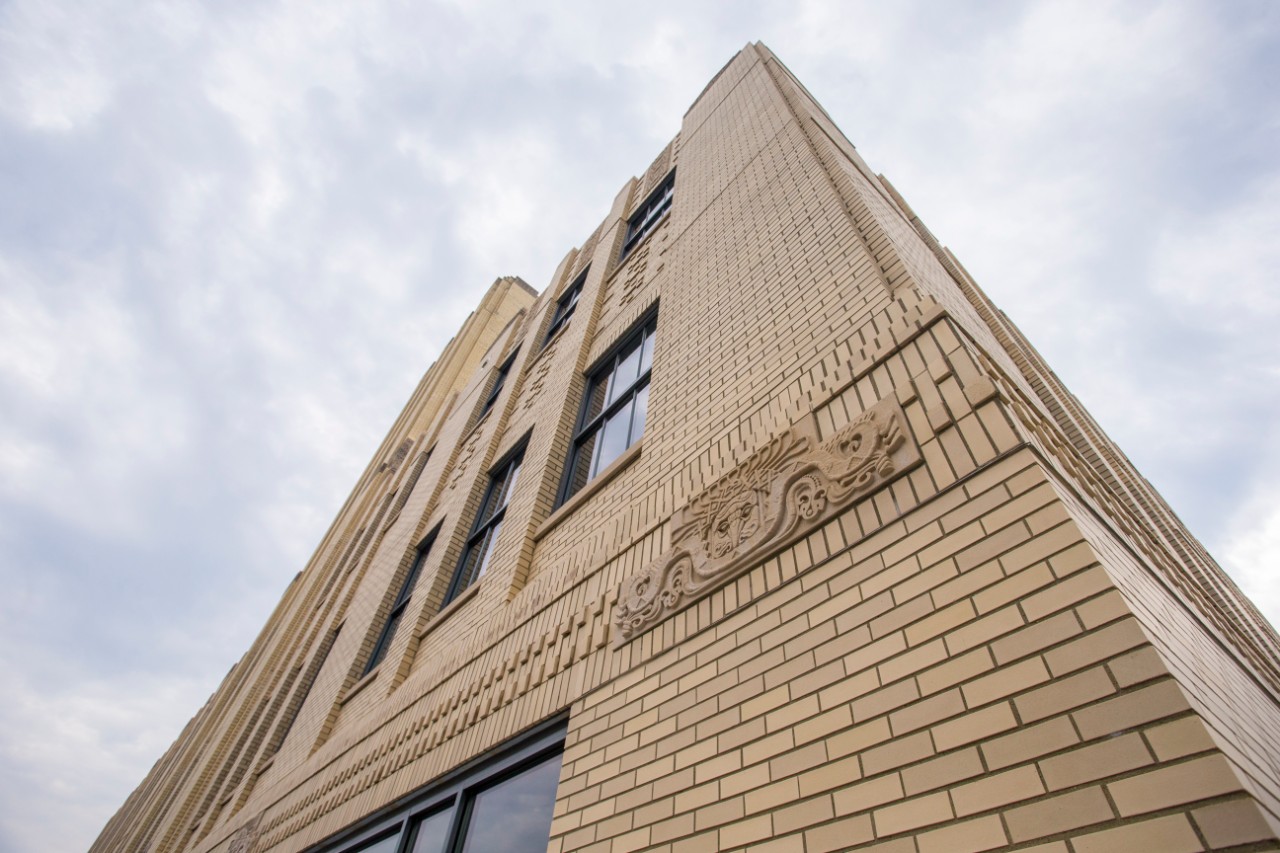
The 1819 Innovation Hub building was originally constructed in 1929, and still retains some of its art deco charm.
Also the result of a partnership between P&G and UC, the Live Well Collaborative facilitates connections between industry and academia, bringing together multidisciplinary teams of students and faculty that work together on semester-long studio projects for industry partners such as Boeing, P&G and Cincinnati Children’s Hospital Medical Center.
The 1819 Innovation Hub will serve as one of the crown jewels of the Uptown Innovation Corridor, the vision of the Uptown Consortium.
"UC faculty, researchers, students and staff advance the work of the Uptown Innovation Corridor through their future-facing research and community partnerships,” says Beth Robinson, Uptown Consortium president and CEO. “That’s one reason why the Uptown Consortium’s oversight of the corridor’s development is so fulfilling: it’s a community effort. As a flagship in the corridor, the 1819 Innovation Hub is a great example of how multi-disciplinary, solution-based collaborations with our Uptown community will continue to shape a better tomorrow.”
The 1819 Innovation Hub will neighbor a new, $110 million National Institute for Occupational Safety and Health research facility. The U.S. Department of Health and Human Services announced its plans for the facility in mid-July.
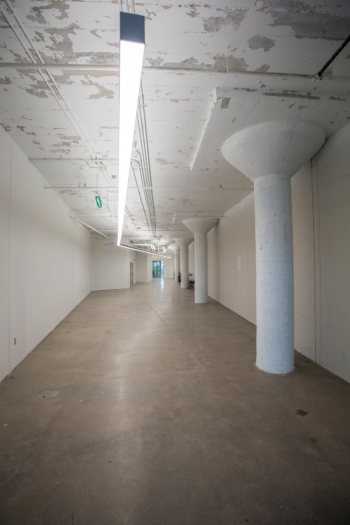
Much of the building is still under construction, but the drywall on the lefthand side of this hallway on the fourth floor of the building will soon be replaced with glass. Behind the glass will be the offices of the UC Research Institute and the 1819 Innovation Hub building staff.
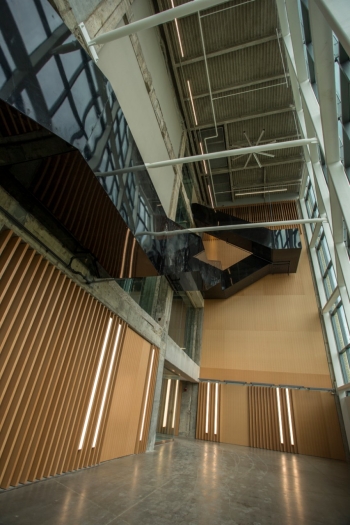
A welcome center will be constructed in the lobby of the 1819 Innovation Hub, viewed here from the ground floor entrance.